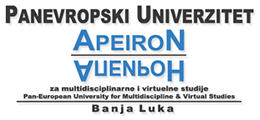 Efficiency Evaluation of Hospitals Sterilization by Biological and Chemical Methods
Efficiency Evaluation of Hospitals Sterilization by Biological and Chemical Methods
Efficiency Evaluation of Hospitals Sterilization by Biological and Chemical Methods
Davood Ahmadi, Abdolmajid Fadaei
Students, Research Committe, Research center, Shahrekord University of Medical Sciences, Shahrekord, Iran,
davudahmadi64@yahoo.com
Department of Environmental Health Engineering, School of Public Health, Shahrekord, University of Medical Sciences, Shahrekord, Iran, ali2fadae@yahoo.com
Abstract: Autoclaving is one of the methods which sterilizes medical solidwaste. This study was carried out to evaluate effi ciency of autoclaves in two Shahrekord hospitals(Kashani and Hajar) in Iran by biological and chemical indicators. In this study, the performance of autoclave was studied based on biological and chemical through setting 96 tests. Variables were loading type in four groups (light, medium, semi- heavy, and heavy), l ocation, type of hospital , and temperature-135°C, time10min features in fi xed pressure equal to 4.2 bar. Biological and chemical indicators were ATCC 7953 which contained Stearotermophilus Geobacillus spores ,and chemical indicator Class 6 with three color circle as weekly, respectively.The best autoclave operational condition based on biological indicator in both hospitals were light loading rate in Kashani and Hajar 66%(8), and 75%(9) desirable results, respectively. Each four loading rate level based on biological and chemical indicators the Hajar hospital with 68% desirable results were more effi ciency than Kashani hospital with57% desirable results. According to results of this study (biological index) sterilization failure in kashani and Hajar hospitals were 65%, and 50%, respectively.There is an increased need for suitable regulation and control of autoclave devices and for monitoring and suitable handling of these devices in developing countries.
Keywords: Medical solidwaste, Sterilization, Autoclave, Biological indicator, Chemical indicator.
| Attachment | Size |
|---|---|
| QOL-Vol-12-Issue-1-2-23-30.pdf | 429.23 KB |
